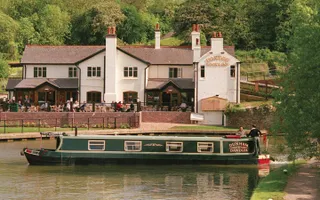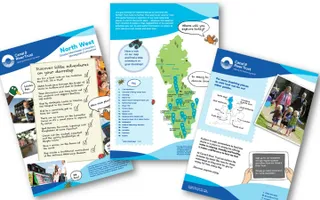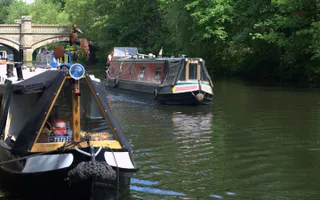The Leicester Line of the Grand Union Canal takes a quiet, meandering course through rolling hills and unspoilt countryside.
Foxton Locks is a well-known waterways landmark in a green and rural location. The ten locks are often busy with narrowboats, while the side-ponds, which provide water to the flight, are havens for nature. They have thriving reed beds, where you can often spot herons, and occasionally rare water voles.
The Foxton Inclined Plane is a unique bit of waterways history – a boat lift that once raised and lowered working boats on a steep slope in water-filled tanks.
The Leicester Line has arms to Market Harborough and Welford. At Union Wharf in Market Harborough, red-brick industrial warehouses have been transformed into arts and crafts workshops, creating a hive of cultural activity. The area around Kilby is also designated as a SSSi.
Days out
Enjoy a grand family day in Leicester or visit Foxton Locks, an area brimming with history, wildlife and scenic waterside walks.
History of the Leicester Line
What is now called the ‘Leicester Line' comprised two canals that were bought by the Grand Junction Canal in 1894: the Leicestershire & Northamptonshire Union Canal and the ‘old' Grand Union Canal.
The River Soar had been made navigable up to Loughborough by 1780, and the route was extended to Leicester in 1794. The Leicestershire & Northamptonshire Union Canal was promoted to continue the waterway to Market Harborough and Northampton, where it would meet the River Nene and the planned branch from the Grand Junction Canal at Gayton.
By 1797, when construction had only reached Gumley Debdale, the money had been used up. More was raised in 1805, and the canal got to Market Harborough four years later.
Meanwhile, the Grand Junction Canal from London to Braunston had opened. Alternative routes for joining the two canals were discussed and it was decided that a separate company to be called the ‘Grand Union Canal' should be formed to make the link. (It is now often referred to as the ‘old' Grand Union, to distinguish it from the canal of the same name created in 1929 when the Grand Junction merged with several other canals.) This opened from Norton Junction to Foxton in 1814, providing a direct route from the East Midlands coalfield and industrial towns to London.
Bought out
Never prosperous, railway competition from the 1840s meant declining revenues, which led to reductions in maintenance. When in the early 1890s the Grand Junction was looking to revive the East Midlands trade, the two companies were very willing to be bought out, so in 1894 the Grand Junction paid £6,500 for the L&NU and £10,500 for the ‘old' Grand Union — the better price for the latter probably reflecting the value of its reservoirs rather than its canal.
The Grand Junction rectified the arrears of maintenance, dredged their new purchases, and built the inclined plane at Foxton, bypassing the ten locks and speeding the passage of the boats. A further inclined plane was planned to bypass Watford Locks but was never built.
It was all too late: traffic grew slightly, but not by enough to make working Foxton incline economic, and in 1910 it was closed and traffic reverted to using the locks.









